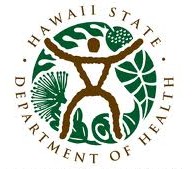5 of 14 Cesspool Priority Areas are on Big Island
 The Hawai‘i State Department of Health has filed a report with the Legislature identifying 14 priority areas of the state where cesspool upgrades are critically needed to protect public health and the environment.
The Hawai‘i State Department of Health has filed a report with the Legislature identifying 14 priority areas of the state where cesspool upgrades are critically needed to protect public health and the environment.
Five of the state’s 14 priority targets are on Hawai‘i Island—Kapoho, Kea‘au, Puako, Hilo Bay and Kailua/Kona coastal areas.
The remaining nine areas are Upcountry Maui; Kahalu‘u, Diamond Head, Waimanalo, Waialua and Ewa on O‘ahu; and Kapa‘a/Wailua, Poipu/Koloa, and Hanalei Bay on Kaua‘i.
The report indicates about 43,000 cesspools—half of Hawai‘i’s total 88,000 cesspools—are located in the 14 priority areas in all counties and need urgent action.
“The report findings are troubling and show wastewater from cesspools is beginning to impact drinking water in some parts of Upcountry Maui,” said Health Director Dr. Virginia Pressler. “The water in these areas is still safe to drink, with no evidence of bacterial contamination; however, there are early warning signs that tell us we must act now to protect the future of our drinking water and the environment.”
Hawai‘i has about 88,000 cesspools, far more than any other state. Cesspools provide no treatment and inject about 53 million gallons of raw sewage into Hawai‘i’s groundwater every day, potentially spreading disease and harming the quality of drinking water supplies and recreational waters. Hawai‘i gets over 90% of its drinking water from groundwater.
“In areas, such as Kahulu‘u on O‘ahu and Kapoho and Puako on Hawai‘i Island, cesspools harm recreational waters and precious coral reefs,” said Keith Kawaoka, DOH deputy director of the Environmental Health Administration. “All cesspools pose a serious threat to our natural environment, and the 14 priority areas are our greatest concern as we are seeing the start of potential impacts to Hawai‘i’s shoreline and drinking water resources.”
The DOH report was ordered by the Legislature earlier this year in Act 125 of 2017.
In 2016, Gov. David Ige signed Wastewater System rules that banned all new cesspools statewide. Prior to the ban, there were approximately 800 new cesspools per year. The rules also provided tax credits under Act 120. The Act provides a temporary income tax credit for the cost of upgrading or converting a qualified cesspool to a septic tank system or an aerobic treatment system, or connecting to a sewer system. A taxpayer may apply for a tax credit of up to $10,000 for cesspools upgraded to a sewer or septic system during the next five years. The program is limited to a total of $5 million or about 500 cesspool upgrades per year. Under the law, owners of cesspools located within 500 feet of the ocean, streams or marsh areas, or near drinking water sources can qualify for the tax credit. To date, about 50 taxpayers have used the program.
“The state began taking action last year, and today’s report clearly highlights the need for greater measures to tackle this impending threat to our drinking and recreational waters,” said DOH Deputy Director Kawaoka. “With 88,000 systems currently affecting our environment, it will take a concerted effort by our entire community to convert existing systems to safer alternatives.”
The cost to upgrade all of the state’s roughly 88,000 cesspools is estimated at $1.75 billion. State law currently requires the elimination of cesspools in Hawai‘i by the year 2050. DOH presented its report on cesspools and prioritization for replacement to legislators and will begin community meetings in impacted areas of the state in January 2018, beginning with Makawao on Jan. 9 and Kahulu‘u on Jan. 12.
For more information on cesspools in Hawai‘i and the Tax Credit Program for Qualifying Cesspools, go online.














